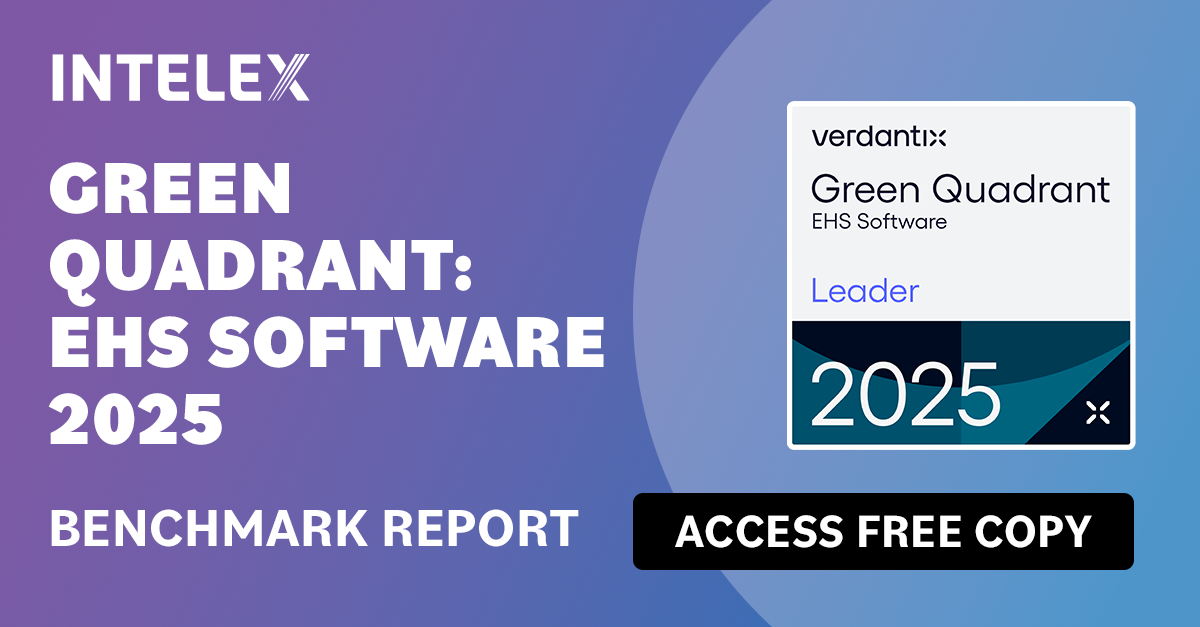ESG: Frequently Asked Questions
ESG stands for Environmental, Social and Governance. ESG data/criteria/information is meant to empirically measure a company’s focus on (and success with) environmental sustainability, ethical business practices and societal benefit. Each pillar of E, S and G contains multiple categories and subcategories to collectively provide an accurate, objective picture of a company’s performance regarding that pillar. For example, the ‘E’ pillar may include carbon footprint, conservation of biodiversity, waste produced, water used and so on.
Conceptually, ESG has been around for quite some time. It has been called Corporate Social Responsibility (CSR), environmental sustainability and the Triple Bottom Line. These concepts, in one form or another, have existed since the 1950s. The key differences between ESG and its predecessors are its comprehensiveness and its focus on objective, empirical, accurate and auditable data. The older concepts were not nearly as structured as ESG, nor were they as useful for decision making by financial institutions and investors. ESG information is better suited to aid in decision making and confidently assessing risk, long-term viability and social contribution of a business.
ESG takes the spirit of Corporate Social Responsibility (CSR) and adds standardization (depending on the reporting framework(s) a company leverages), scrutiny and comparability. To put it simply: ESG is structured and used for decision making, whereas CSR is unstructured and used for marketing and brand enhancement.
The ability to manage and report ESG indicates strong corporate leadership and governance and defines organizations as an employer of partner of choice.
ESG importance is a direct result of investor demand for ESG data to make investment decisions. These decisions, however, may be rooted in a variety of investment philosophies. Some may feel companies with strong ESG performance deliver better returns over time. Others believe strong ESG performers are lower-risk investments. Finally, some prefer strong ESG performers because they want to invest in companies that they find morally agreeable. This interest has led to companies investing in their ability to provide this data, which in turn led to regulatory bodies applying rules to how this data must be provided. The combined impact of these factors has led to ESG becoming a boardroom topic with the power to impact revenue and financial resources.
While ESG frameworks focus on reporting, the basis of that reporting will be the efficiency and awareness of organizational processes. Management systems that integrate environment, health and safety, supply chain and quality management processes will be important for ensuring your ESG reporting reflects the operational excellence you’ve achieved in your organization.
Organizationally, surveys show that many field and line-level EHS professionals are adding ESG data collection to their ongoing responsibilities. Data aggregation and reporting responsibilities are often assigned to corporate management staff with heavy involvement from field and line-level staff across environmental, social/HR and governance/Legal and Finance functions. Functionally, ESG expands upon traditional environmental, health and safety concerns and metrics by adding focus on material (see below) risks, performance improvements and disclosuresnot only for EHS concerns, but also for corporate social and governance aspects.
Materiality is a concept that defines why and how certain issues are important for a company or a business sector. A material issue can have a major impact on the financial, economic, reputational, and legal aspects of a company, as well as on the system of internal and external stakeholders of that company.
A materiality assessment or analysis is a process in which a company identifies the environmental, social, governance and broader emerging issues, such as digitalization, innovation and geopolitical events that are most important given the operating context of a business.
Materiality assessment guides the organization's ESG strategy, as it helps with a meaningful target setting based on a data-driven approach to choosing and prioritizing ESG metrics to track and report.
The first element of materiality concerns the impacts an organization’s activities have on the environment and society. The other element is centered around the actual or potential impacts of climate change on the organization’s business and performance. Conducting a double materiality assessment means understanding how your business impacts the world around it and how the world around it impacts your business.
ESG risks are environmental, social and governance factors that can affect a company’s value, assets, reputation and operating performance.
They are relative and completely depend on what type of business a company is in, where it operates, who it serves and the scale of its operation. ESG risks cover a wide range of environmental, social and governance factors, such as climate change, carbon emissions, human rights, employee diversity and data protection. Risks can change or accumulate over time, so it is important to regularly assess what is most important to stakeholders.
ESG risk management is a system of people, procedures and technology that allows a company to identify and monitor ESG risks, as well as avoid or minimize their impact on their assets, reputation and performance.
An ESG score or rating is a measure of a company's performance across ESG criteria. ESG ratings are facilitated by a number of different rating agencies, most of which are businesses themselves (i.e., not governments). Top rating agencies include Sustainalytics, MSCI and Bloomberg. Although each ratings agency/organization is effectively doing the same thing – scoring an entity's performance across ESG criteria – they all do it in different ways. MSCI may include different sub criteria in the ‘E’ pillar than Bloomberg. They may also assign weight differently or consider different activities as good or bad. For this reason, ratings vary widely depending on whose scores you are looking at. NOTE: ESG scores are different than ESG disclosures, though disclosures may help inform scores.
As ESG disclosures and regulations become more commonplace, businesses that manage and improve their overall ESG performance will gain a competitive advantage over their peers in reputation, resiliency, ability to attract talent and ability to attract capital.
ESG invites special attention from the investor and financial community because of its link to investing philosophies. In addition, customers, employees and suppliers/partners are becoming increasingly diligent about associating with the companies creating positive impact for the environment and society.
"What is the environmental impact of this company?" "What are the potential risks and rewards for society and for the workers of the company and the neighboring populations of its facilities?" "Is the company governed ethically, by competent, law-abiding leadership?" “What are they doing to reduce their environmental footprint or promote economic equity in their community?”
ESG reporting software provides organizations with a tool to streamline the collection, analysis, reporting and improvement of ESG data. Often it will facilitate reporting to multiple frameworks and promote visibility on ESG results and performance improvement efforts. It may also help you benchmark against peers and manage ESG risk. NOTE: ESG software comes in many shapes and sizes. Some tools are meant specifically for aggregating all sorts of ESG data. Others are more tactical, meant to manage one part of ESG, such as with EHS software or Net Zero software.
ESG reporting may encompass 300 or more data elements, depending on the frameworks and regulations at play. EU regulators have identified as many as 1000 data elements that might be material (see definition below). Typically, organizations use a mix of software programs (the median count seems to be 10-12 according to some studies), horizontal software tools (Excel) and manual efforts (pen and paper).
ESG reporting shouldn’t be this hard and it needs to get better/faster/more efficient/more accurate to meet increasing demands from regulators, investors and the public.
- The new-for-2024 CSRD (Corporate Sustainability Reporting Directive) tracking and reporting regulations are a top priority for many prospects that have EU operations. Similarly, potential US SEC (Securities and Exchange Commission) tracking and reporting regulations could become a top priority for companies that have US operations.
- We may see similar interest among prospects that have US operations once the US SEC finalizes their regulations as anticipated this Fall.
- Carbon taxes are an additional factor driving some software purchases, where identifying carbon emissions and reducing them can cut or reduce the growth in carbon tax costs.
- Coping with data variety and volume
- Handling complexity of calculations
- Staying in compliance with evolving rules and regulations
There are three main use cases for ESG: disclosure reporting, performance improvement and risk management.
- Disclosure reporting: collecting auditable data for one or more frameworks, such as ESRS, SASB, CDP, GRI and more.
- Performance improvement: using ESG metrics and analysis to identify areas of improvement and trigger organizational change, such as sourcing from vendors with higher sustainability standards.
- Risk management: ESG is increasingly being recognized as a proxy for corporate success and the risk of an investment, impacting a company’s access to financial resources.
Given the increased ask from the investors for consistent, comprehensive and comparable ESG data, many countries are increasingly moving towards implementing mandatory ESG disclosure requirements. Countries or regions with active or proposed requirements include the United Kingdom, France, the European Union, Singapore, Australia and the United States.
There are many voluntary reporting frameworks mostly built by the non-profit organizations that provide the guidelines and standards to disclose ESG data in a structured way. Some of the popular ESG reporting frameworks include ESRS, GRI, SASB, CDP and UNGC.
Investors are increasingly looking for high quality, comparable data that they can use to support their investment decisions. With ESG data becoming more important in investment decisions, the financial community expectation is that ESG data will be of the same high quality as financial reports. This means accurate, comparable, consistent, timely and auditable data.
Carbon footprint is the total amount of greenhouse gases (GHG) emissions caused directly and indirectly by an individual, organization or a product. Carbon emissions are split into three categories, known as Scope 1, Scope 2 and Scope 3. Scope 1 emissions are emissions caused directly by an entity’s operations (such as a powerplant emitting hazardous air pollutants). Scope 2 emissions are emissions caused by an entity’s energy usage (such as the emissions you cause by turning your house lights on). Scope 3 emissions are emissions caused indirectly by an entity’s operations (such as the emissions caused from making computers).
Carbon management software enables organizations to collect, calculate, manage and report their carbon emissions in a simple and efficient way. It supports organizations in tracking their performance against the emission reduction goals, allowing them to manage their climate change programs more efficiently.
With the increasing attention on climate change, organizations are expected to be transparent about tracking and reporting their carbon emissions. It helps to identify excessive energy usage or other inefficiencies to reduce the organization’s impact on the environment. Furthermore, some governments assess carbon taxes on carbon emissions. For Canadian operations, tax rates are notable today and will increase significantly, so businesses need visibility into carbon emissions with a strategic aim of reducing the taxable quantities.
Carbon offsetting is a way of compensating for your emissions by funding carbon saving elsewhere. It allows organizations to fund environmental projects such as reforestation, renewable energy, etc. and ‘offset’ the emissions from their operations.
 1 877 932 3747
1 877 932 3747





